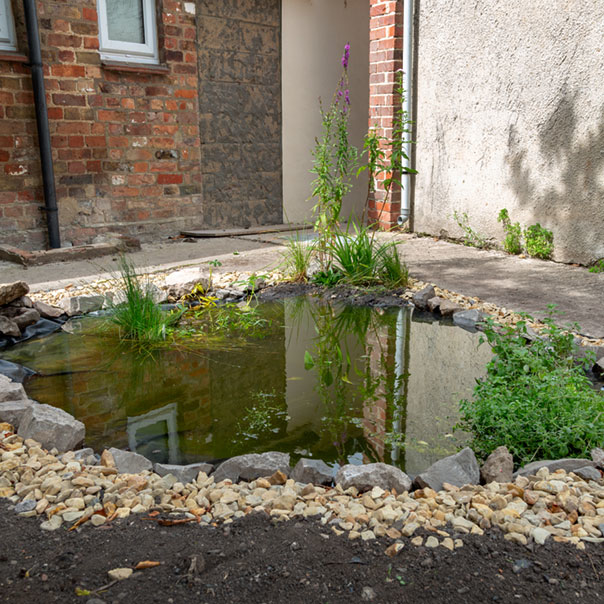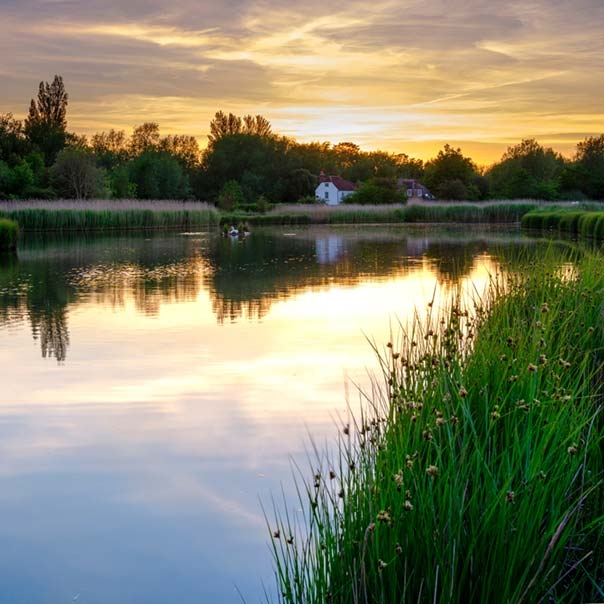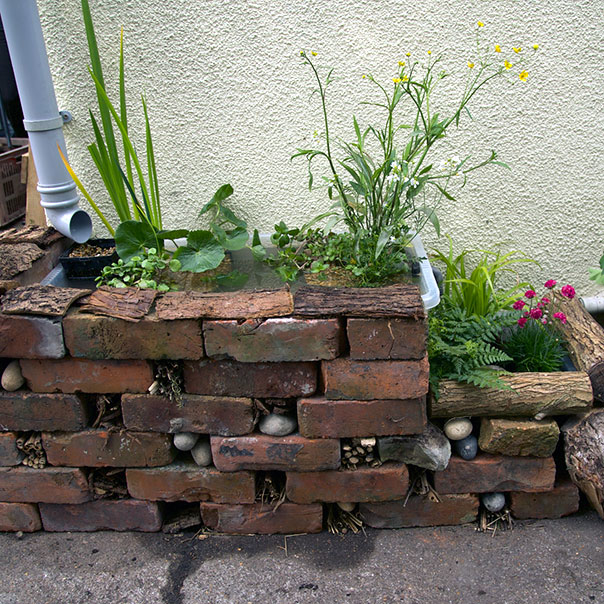Amphibians found in UK wetlands
Seven species of amphibian – frogs, toads and newts - are native to the UK, many of which might just be found in your garden pond.
Amphibians are incredibly important animals in the wetland food chain. They act as both predator and prey, eating insects and invertebrates like slugs and snails, as well as providing vital food for birds and other animals like otters.
What makes an amphibian?
Amphibians have smooth skin and are cold-blooded. They lay eggs in water and their young hatch as wriggling larvae with long tails and gills to breathe underwater, before developing lungs and metamorphosing to live a four-legged life on land.
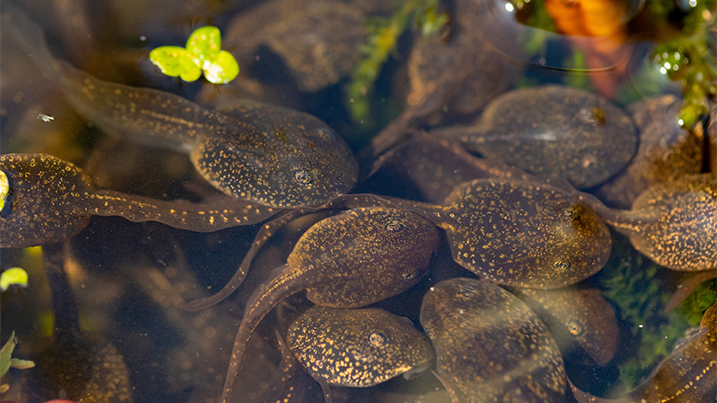
Where do amphibians live?
When breeding, UK amphibians can be found in non-flowing bodies of water, such as a pond or lake. They often like to be surrounded by some plant cover. Most species spend the rest of the year on land, in cool, wet places finding food or hibernating, but might return to water to hunt.
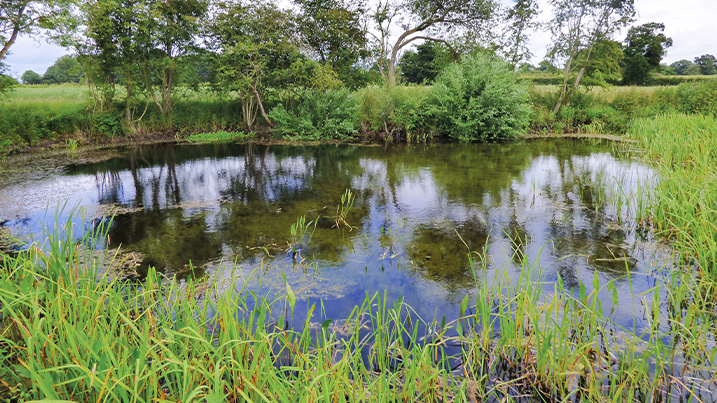
What do amphibians eat?
They will feed on a wide variety of food items, primarily worms, slugs and insects, but may be tempted to eat anything that fits in their mouths; this can even include other amphibians and their young.
A guide to UK amphibians
Common frog
Rana temporaria
Found throughout the UK, they can be identified by their smooth skin and long legs; perfect for hopping. Varying hugely in colour, they will usually have dark spots and stripes and a ‘mask’ behind the eye. Tadpoles are faintly speckled golden-brown, commonly found in garden ponds; an extremely important breeding habitat for this species. Common frogspawn is laid in large clumps at the surface.
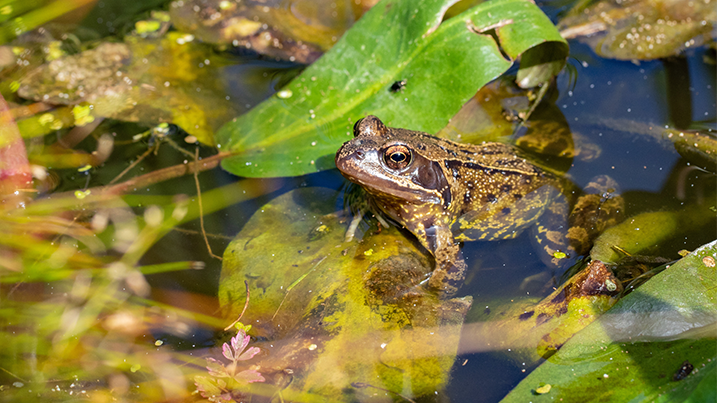
Pool frog
Pelophylax lessonae
Brown or green with dark blotches and a lighter stripe along their back, with a pair of ridges that run from the eyes, down the back. Breeding later in the year than our other frogs and toads, their spawn is laid in small rafts coinciding with the onset of warm nights in May/June, when our other species’ young are likely to already be walking on four legs. Extinct from the UK by the mid-90s, they have since been reintroduced to a handful of sites in Norfolk.
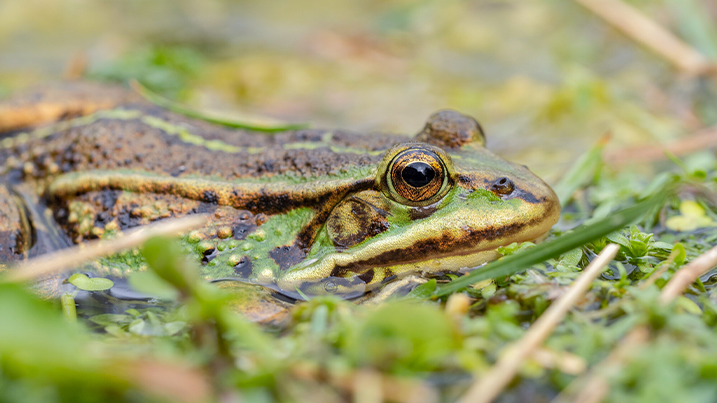
Common toad
Bufo bufo
Often a dark sandy colour, they can be told apart from the common frog by their flat, broad bodies and warty, dry skin. They also usually crawl rather than hop. Widespread across mainland UK, they’re famous for migrating en-masse in the early spring to their breeding ponds after emerging from their winter hibernation. Toadspawn is laid in long strings and toad tadpoles are solid black in colour.
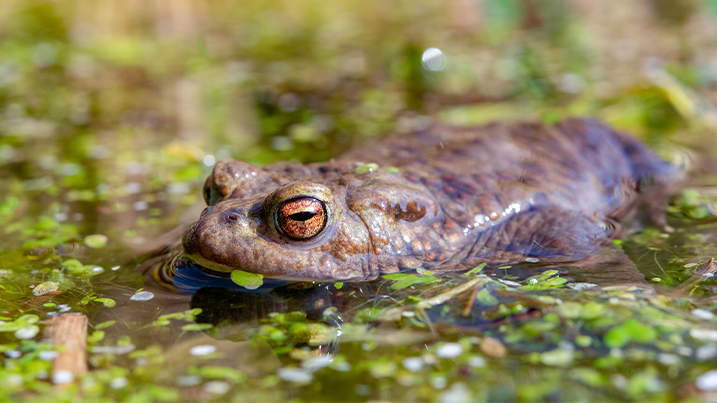
Natterjack toad
Epidalea calamita
Smaller than the common toad with variable colouring, they breed in warm, shallow, ephemeral pools. Although they breed in ponds, they spend a lot of time on land; on quiet spring nights, their loud rasping croak can be heard up to 2km away as the males all sing together to attract females, who lay single strings of spawn unlike the double strings of common toad. They are sadly now rare and are largely restricted to coastal sand dunes.
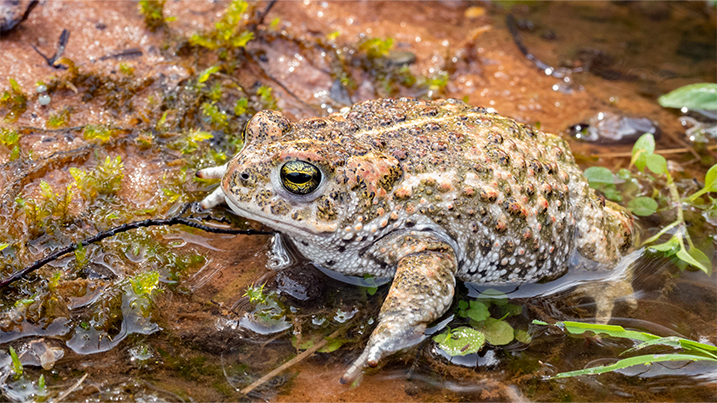
Smooth newt
Lissotriton vulgaris
Also known as ‘common’ newt, they are smaller than the great crested newt but with similar belly markings and wavy crest of the male in the breeding season. They’re widespread in the UK and the most likely newt species that you will find in a garden pond. Single eggs are laid, wrapped in a leaf. You can distinguish newt larvae from toad and frog tadpoles as they have obviously feathered gills.
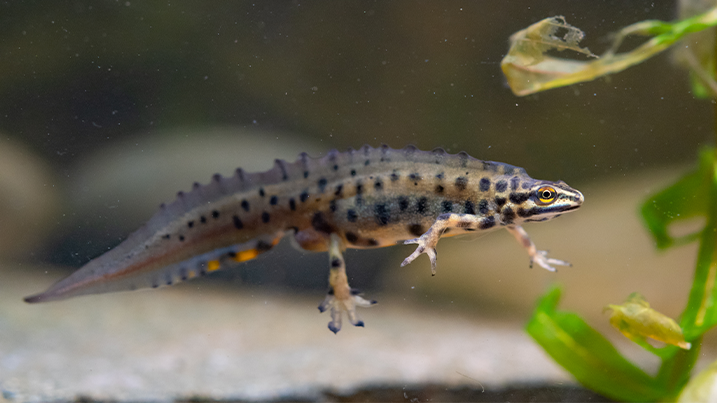
Palmate newt
Lissotriton helveticus
This species looks very similar to the smooth newt, but is less likely to be found in garden ponds. Instead they prefer shallow pools on acidic soils, such as upland, heathland and moorland. They have a few spots on their belly but none on the throat, unlike the smooth newt. During the breeding seasons the males develop black webbing on their feet, for which they are named. Eggs, like those of the other newt species, are laid singly on plants.
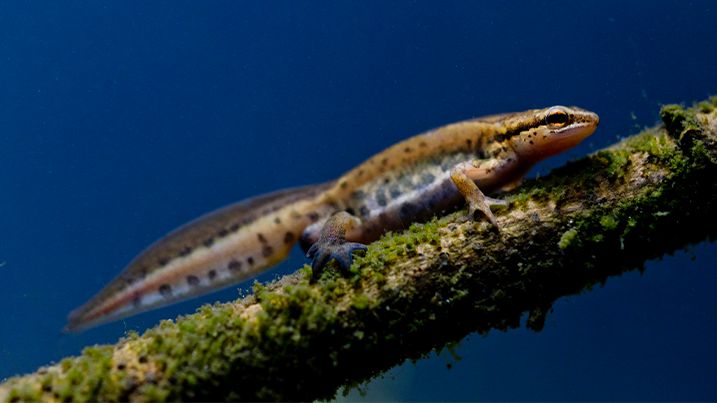
Great crested newt
Triturus cristatus
Our biggest newt – they can get to be 15cm long! Mostly black in colour with warty skin, white-spotted flanks and a striking orange belly (as unique as a human fingerprint). Males have a long, wavy crest along the body and tail during the breeding season. They’re patchily distributed across the UK as they suffer significantly from habitat loss. In spring, females lay around 300 eggs, one by one, inside the leaves of aquatic plants.
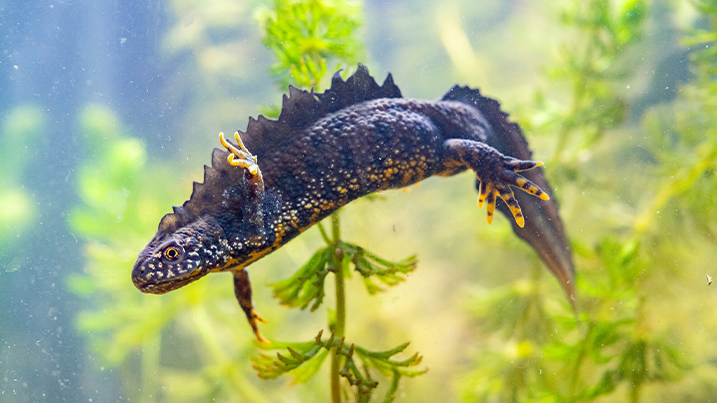
My amphibian doesn’t look like any of the above
There are a surprising number of non-native frogs, toads and newt species that have been introduced to UK ponds.
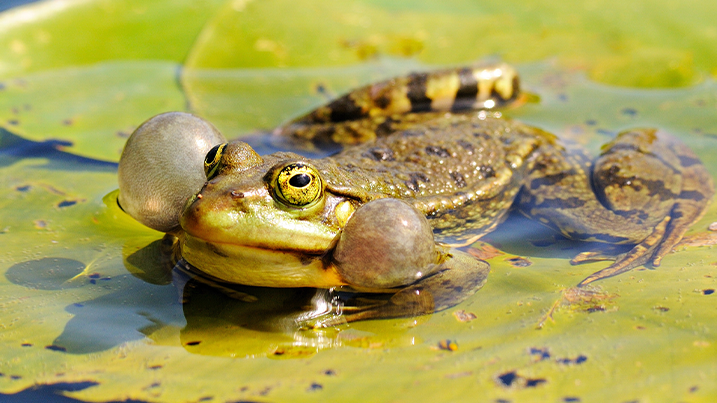
The most common of these is the marsh frog, now widespread across the southeast of England. They differ from common frogs too in that they are more tied to water and they lay small clumps of spawn, attached to underwater plants. They are larger than a common frog, greener in colour with no mask behind the eye. You may hear them before you see them; on spring evenings at dusk, the males inflate the air-filled sacks either side of their head to make a distinctive cackling sound.
A special mention goes to
Grass snake
Natrix helvetica
This is the most likely snake you’ll find in UK wetlands and they are of course a reptile (cold blooded with dry scaly skin, reproduces by laying eggs on land) but we’ve included them here as they are good swimmers and can be found in many ponds, including in your own garden. This is because ponds make for such good hunting grounds; the rich variety of amphibian prey a key food source..
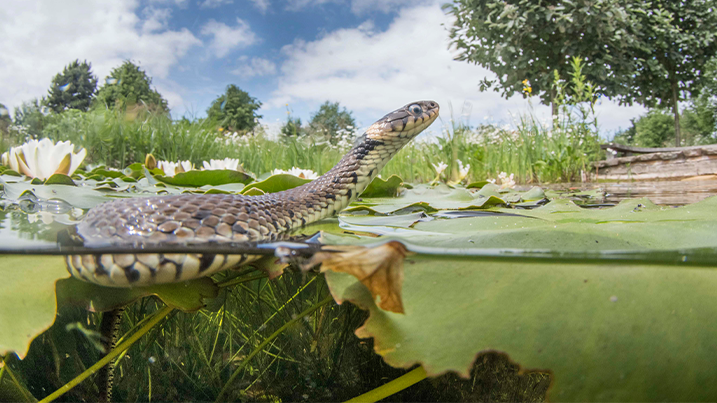
Threats to amphibians
The loss and degradation of wetland habitat has hit amphibians hard, with 40% of species declining worldwide according to a 2019 UN report, and the UK is no exception.
41% of amphibians are threatened with extinction worldwide, primarily due to:
- Wetland habitat loss and degradation through pollution
- Invasive species
- The effects of climate change e.g. increased forest fires and droughts
- Diseases such as that caused by the chytrid fungus
- Human involvement i.e. road deaths and the pet trade
How WWT are helping
Restoring ponds in the UK landscape is key to helping our amphibians. As well as encouraging ponds to be created in residential gardens, we’ve been working to provide evidence of the benefits of farmland ponds. The Conservation Evidence team have been using historical maps to identify older, forgotten ponds and identify areas that are key to maintaining a healthy pond network. We have been providing guidance and funding for farmers interested in restoring and creating ponds on their land, and helping them to become advocates for nature-friendly farming.
